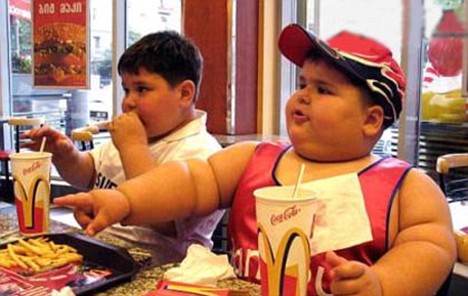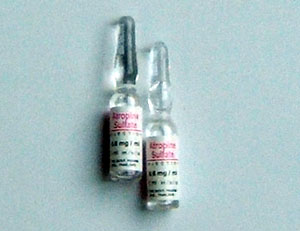 Human circulatory system consists of the heart , the arterial and the venous systems . Together they constitute the three important limbs of circulatory system namely , the pumping, delivering and retrieval systems .In physiological conditions approximately 6 liters of blood has to traverse the entire circuit every minute . The purpose of the circulatory system is not simply circulating the blood within the body, but it has to perfuse different vital organs like brain, kidney, liver . Of course , the heart has to self perfuse the coronaries by it’s own contraction.The organ perfusion is determined by local and systemic regulatory mechanism. A gamut of intrinsic and extrinsic neuro humoral modulators take up this job. A functionally intact autonomic nervous system is an absolute necessity to maintain tissue perfusion. The perfusion pressure is highly variable in different organs and different cells. Similarly the ability to with stand ischemia and hypoxia also varies. Shock is a general term used to imply , circulation is seriously compromised.Here we will confine our self to the intricacies of peripheral circulatory shock
Human circulatory system consists of the heart , the arterial and the venous systems . Together they constitute the three important limbs of circulatory system namely , the pumping, delivering and retrieval systems .In physiological conditions approximately 6 liters of blood has to traverse the entire circuit every minute . The purpose of the circulatory system is not simply circulating the blood within the body, but it has to perfuse different vital organs like brain, kidney, liver . Of course , the heart has to self perfuse the coronaries by it’s own contraction.The organ perfusion is determined by local and systemic regulatory mechanism. A gamut of intrinsic and extrinsic neuro humoral modulators take up this job. A functionally intact autonomic nervous system is an absolute necessity to maintain tissue perfusion. The perfusion pressure is highly variable in different organs and different cells. Similarly the ability to with stand ischemia and hypoxia also varies. Shock is a general term used to imply , circulation is seriously compromised.Here we will confine our self to the intricacies of peripheral circulatory shock
Traditionally shock is classified as
- Cardiogenic shock
- Hypovolemic shock
- Vasodilatory /Redistributive/Septic /Warm shock (Can be called as arterial shock )
The hemodynamics of the first two are straight forward and easily understood. In cardiogenic shock , the pumping action of heart is primarily affected .In hypovolemic shock there is no structural defect in any of the circulatory limbs but there is a loading defect due to low blood volume as in hemorhagic shock .
The term vasodilatory shock or redistributive shock is most poorly understood and most difficult to treat.
The concept is further confounded as combinations of above three mechanism in a same a pateint can occur . ( More commoner than we believe !) . An example could be a septic patient with an internal bleed and myocardial depression either due to preexisting LV dysfunction or circulating toxins.
Since we have always perceived heart as the sole vital component of circulatory system , our understanding of the role of the vascular tree which is primarily responsible for delivering the blood is largely undermined and neglected. We are always happy if the EF % is normal.
Classical features of circulatory failure ?
The cardiac contraction is good.This is documented by normally contracting LV by echocardiography. The pulmonary capillary wedge pressure is normal (<12mmhg).Still the patient is in hypotension with evidence for vital organ under perfusion like oliguria and reduced mentation.
What is vascular tone ? What sustains the flow of blood into the tissues ?
The entire vascular tree could form a few 100 kilometer length.(Capillary /arterioles /venules included). While , it is easy to percieve heart as a dynamic pumping organ , it is a less recognised fact the entire vascular tree is also pulsating to every beat. That is the rhythm of life. What makes the vascular tree to pulsate ? Apart from contraction of the heart , there is an intrinsic tone for the large , small arteries and the arterioles and veins .This tone is vital for pushing the bllood into various organs and return into venous circulation and subsequently back into the heart.

The millions of perivascular cuffings and the artreriolar smooth muscles can be considered as small micro pumping stations situated along side every cell.
It is very important to emphasize here, if tone in these microcirculation is less than optimal , the patient’s circulatory system can never complete the desired circuit even if the heart has 75% EF . This exactly is happening in circulatory shock . The vascular tree fails to accept and return the pumped blood in timely fashion.
What controls this tone ?
It is chiefly under the control of autonomic nervous system.The endogenous vasoconstrictors , the adrenergic nervous system, the endothelins , the angoitensins constrict the vascular smmoth muscles while endothelial relaxing factors ,( EDRF -nitric oxide relaxes it ). There is a delicate balance between these forces.
A cardiovascular health of a person is not simply having a healthy heart , he has to have a healthy vascular system with intact biological activity.The fact that , not every one with sepsis react with poor vascular tone indicate inherent capacity to neutralise toxic vasodilatory neuro transmitters.
Is there a invisible parameter called vascular ejection fraction in circulatory system?
Yes. It must be . We rarely discuss it . The vascular tree has an important role for pumping the blood into the tissues. It needs micro manometers to assess the systolic and diastolic dimensions of small arteries and arterioles . But what we know is , it is grossly impaired in circulatory failure.The vessels especially the arteriolar smooth muscles which determine the perfusion pressure of cells go into state of permanent relaxation. The vascular smooth muscles lose control from autonomic innervation and become flabby. It is the DCM equivalent for blood vessels. The arterioles no longer regulate blood flow and fluids get sequestrated in various viscera,( often called thrid spaces) and organ dysfucntion sets in. The resultant hypoxia aggarvates the tissue stagnation by producing still unnamed vasodialtory mediators.
What are the pharmocological approches to increase the vascular tone of a failing vascular tree ?
It is a very difficult problem even in this modern era of vascular medcine. Once set in , these patients invariably go downhill .The primary underlying problem , often sepsis need to be corrected. Usually these patients need multi organ support.Vasoconstrictors like epinephrine,nor epinephrine , dopamine can sustain vasoconstriction temporarily . As we know the vascualr smooth msucles can not be kept on this assited contrection mode for long.It is bound to fail .Patients native autonomic function has to recover fast to wean of this support.
What is normal circualtorty time .How is it altered in circualtory failure ?
The normal circualtory time is 15-20 seconds.It is many times prolonged in circualtory failure inspite of the cardiac contraction being normal
What is effective circulatory volume ?
The body fluid compartment is divided into ICF,ECF & interstitial spaces.At a given time , the fluid in the extracellular space can only take part in circulation. A good blood pressure does not always mean a good tissue perusion why ? This is very important to realise as blood pool has to dynamically exchange with intra cellullar compartment. At times of shock the blood can bye- pass the cells through the alternate circuits in the periphery of micro circulation. So what is circulating in the system may not be taking part in tissue perfusion .This is the concept of effective circulatory volume.This is especially noted in hepatic shocks and in some terminally ill malignancy.
Is there a venous shock syndrome ?
Cardiologists often show a step motherly attitude to venous disorders. In fact many of the cardiovascular specialists think their job is taking care of heart ( Of course , a little bit of aorta and venacava !) .It is surprising to know, there is little scientific data on determinants venular and venous tone (Both small and large veins).
The power of venous system should not be under estimated as it pumps many litres of blood every minute defying gravity ! For this to happen it needs a vigorous tone .Where do it get from ? : The same autonomic nervous system that controls the heart. Remember , in pathological states there is a great chance for this to go out of control. So venous shock is a clinically distinct possibility. In fact inappropriate administration of nitrates which reduces the venous tone has resulted in many adverse events in RV shock.
In a patient with circulatory shock , we would never know how much is contributed by venous side and how much by arterial side .This is important as in circulatory shock we administer all vital drugs through veins.Now it is thought systemic venous dysfunction also contribute to shock state.
Clinical situations of circulatory failure or shock
Bacterial shocks
- Gram negative sepsis
- Staphylococcal shock
Viral shocks
Dengue/Swine flu etc
Others*
- Dissiminated intravascular coagulation
- ARDS–hypoxic shock
- Elderly,Diabetic autonomic neuropathy
- Persistent post operative hypotension due to silent autonomic neuropathy.
- Some cases of Spinal shock
- Toxins – Scorpion etc(Intense vasoconstrictive shock )
- Terminal shock in liver failure/Hepato pulmonary syndrome
* Idiopathic unexplained persistent hypotension , with difficulty to wean off from vasoconstrictive agents is a commonly encountered problem in any intensive care unit.The exact mechanism is not known.When we are not clear about the mechanism we generally blame it on the the autonomic nervous system !
How common is the mixed shock syndrome ?
This is more common than we realise .The classical description of multisystem failure is a direct consequence of this.
Can a cardiogenic shock transform into a peripheral circulatory shock ?
Such a scenario is possible .A resuscitated cardiac arrest may end up with a recovered heart but a loss of vascular tone possibly due to hypoxic vascular damage. .Many times cardiac patients are kept (Post PCI/CABG ) on large doses of vasoconstrictors or IABP that can induce tachyphylaxis. It may result in difficulty in weaning these drugs.
How can circulatory shock result compromised cardiac function ?
The common effect of any shock is reduced organ perfusion.So even in peripheral shock , the coronary blood flow gets compromised especially if these patients have a silent coronary lesions which are otherwise not significant , becomes sites of hemodynamic hurdles during hypotension.This may result in global contractile dysfunction, or a coronary event.
What is vasoconstrictive shock ?
Epinephrine and nor epinephrine are very potent vasoconstrictors .If levels of these becomes excessively high , the blood vessels go in for sustained spastic state that can impair the micro circulation .Some times this results in a good blood pressure in the major vessels but severely compromised tissue perfusion.This particular situation has been reported after scorpion envenomation , and in rare cases of pheochromocytoma .
Final message
Primary circulatory failure or shock (With largely intact cardiac function without hypovolemia) is a common problem in critically ill. The entire macro and micro vascular tree goes for a stunning reaction and goes for a sleep in a semi dilated state . It can be termed as Arterial or Arteriolar shock. Contrary to all those hi-tech mechanical stuff for supporting a failing heart (LV assist, Impalla, Abiomed , ) the available options are very little here . The response to vasoconstrictive agents are also unpredictable. Correcting the multi organ failure and targeting the primary cause is the only hope.
Read Full Post »













